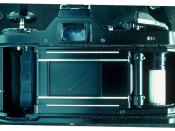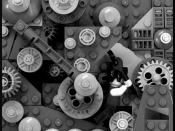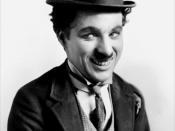Evolution of the Narrative
Carl Dreyer's The Passion of Joan of Arc and Charlie Chaplin's Modern Times both contribute tremendously to the art of storytelling in modern filmmaking. Despite very little or no speech, each story is able to covey a highly understandable story line that rivals most dialog driven films of today. Both films make perfect use of music, facial expression, body language, and cinematography to tell the story. Each film provided a perfect model for the modern day narrative motion picture.
Since neither picture uses dialog as a way to tell the story they rely on other cinematic elements to translate the storyline to the audience. Music is perhaps the most common and most effective way of doing this. In The Passion of Joan of Arc, Joan's plight is signified and magnified by emotionally driven music ballads that depict the scene's mood. Modern Times uses the same methods to not only show the characters emotional state but also set the mood for each scene.
This technique is more than common in modern filmmaking. Take for example in horror movies of today and the past music plays an enormous role in portraying what each scene is meant to be interpreted as. Early Hitchcock film's like Psycho and Vertigo make an art of this method. However, this is not the only way each film aided in the production of more modern films.
Each film uses cinematograph to show each characters facial expressions and body language in a way that would portray what each character was trying to say without words. The Passion of Joan of Arc makes use of camera angles to dramatize each scene. The expression of the actors is captured in a way that the audience can see visually what the story is trying to incur. Modern...


